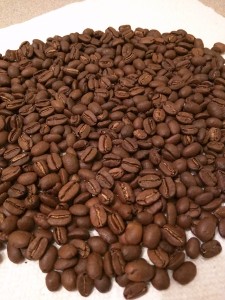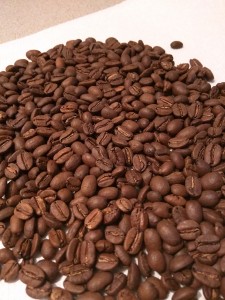I was really looking forward to the New York Coffee Festival ever since I saw an alert for it in my Google news feed. I was not disappointed. The coffee samples were plentiful, and representation was there from giants in the industry to the small folks just starting out. It was great to see even footing for all, and New York has one hell of a coffee scene going on right now. Yes, Starbucks had the largest display in the event, but their display was not even close to the most visited.
The barrista challenges were quite fun to watch, although I wish the announcers would have talked less, and the barrista mics were on more. I could see them talking to the judges and wanted to hear what they were saying.
A highlight for me was the La Marzocco booth. They had a bar where different roasters took turns showcasing their signature coffees. But the real fun was the demos of the new Linea Mini machine. This is a “home” machine, but really it’s just a scaled down version of their signature cafe machine…it’s even NSF rated. But, what good is a home machine if you can’t try it? So, they had 3 machines out there and let anyone interested pull shots and steam some milk. The machine really is quite amazing, but the price tag is pretty steep at $4495 (given the price of a GS3, this is a steal). It’s not as programmable as the full commercial version, but it’s more than up to the task. It was a blast playing with it.
This was the first time the event has been held in the US after several turns in London and Amsterdam. I have to believe this will be back next year, and if so, you should go. You don’t have to be in the industry to have fun. You just need to be a fan of coffee.





